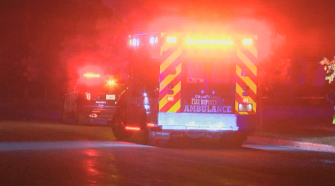U.S. technology and extensive defensive preparations helped prevent U.S. and coalition casualties following Iran’s missile attack on two bases in Iraq, Pentagon officials said Wednesday, far more than any effort on Tehran’s part to offer a controlled and limited response to the killing of Gen. Qassem Soleimani that resulted in no American or allied casualties
Iran fired 16 missiles into Iraq, with 11 striking the al-Asad air base and a single missile hitting just outside another military facility near the Kurdish city of Irbil. Gen. Mark A. Milley, chairman of the Joint Chiefs of Staff, said it was clear Iran intended to destroy equipment and kill soldiers.
“That’s my own personal assessment,” Gen. Milley told reporters late Wednesday.
Pentagon officials didn’t want to release details of their warning systems, but said they were sophisticated enough to give personnel at the two bases in Iraqi sufficient time to take cover. Reports from the region say Iraqi officials were warned by Iran of the coming strikes and passed along that information to the American forces.
“There are bunkers and jersey barriers and places to hide,” Gen. Milley said.
Weapons experts say Iran likely relied a version of its Fateh 110 family of missiles in the attack. Most of them have a range of about 180 to 300 miles.
“It’s Iran’s most accurate missile. It is domestically produced,” said Behnam Ben Taleblu, an Iran expert from the Foundation for Defense of Democracies.
Analysts at Army-Technology.com described the Fateh 110 missile as “a road-mobile solid propellant system that was previously used by the country in an attack on a ski resort in Israel.” That salvo in January 2019 was intercepted by Israel’s Iron Dome missile defense system. Iran also may have fired its new Zolfaghar short-range ballistic missile. It has a 420-mile range and was used during Iran’s strikes against ISIS targets in Syria in 2017 and 2018.
A quarter of their missiles did not strike any target in Iraq. But Iranian officials will still likely see that more as a 75% success rate than 25% failure rate, Mr. Ben Taleblu said, who noted Iran has an advantage over its neighbors in both the quality and quantity of its weaponry.
“Iran has the largest ballistic missile arsenal in the Middle East,” he said. “Iran has a quantitative missile advantage in the region. There are steps designed to turn this into a qualitative advantage.”
The attacks against the bases in Iraq demonstrate Iran’s reliance on ballistic missiles as a tool of diplomacy as well as retaliation, said Thomas Karako, director of the Missile Defense Project at the Center for Strategic and International Studies.
“They probably didn’t want to kill a bunch of Americans,” Mr. Karako said, one of a number of private analysts who disagreed with Gen. Milley’s assessment. “I see these as intentionally limited strikes but using more sophisticated guided missiles to accomplish those limited objectives.”
Iran’s response to the U.S. mission to kill Soleimani was relatively muted, Mr. Karako said.
“I think the U.S. came out looking pretty well on this,” he said.
Whether their missile strike was muted or not, it was a “significant escalation by Iran,” Mr. Ben Taleblu said. “They wanted everyone to know they would not take the killing of their most noteworthy military figure lying down.”
“The fact that [the missile strike] came from Iranian territory is crucial. They wanted it to be a public move,” he said.
Analysts say Iran is likely to play up their missile strike against the Americans for both domestic and international audiences.
“How Iran responds next is the key,” Mr. Ben Taleblu said.

















